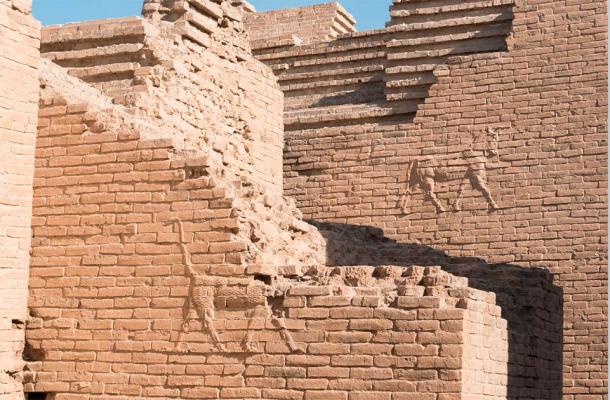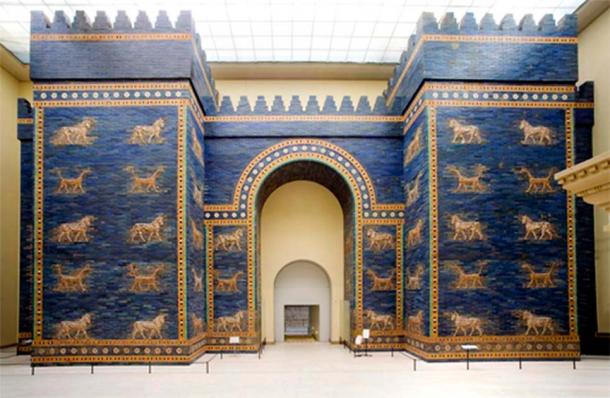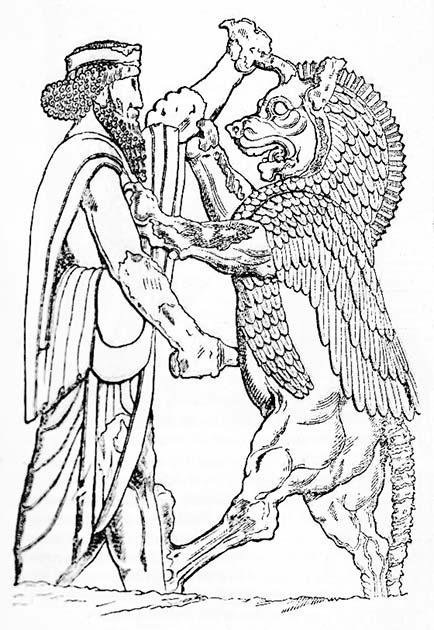
Beyond Myth and Legend: Tracing the Footsteps of Unicorns in Ancient Cultures
Throughout the annals of history, the unicorn has captivated humanity’s imagination, leaving traces of its existence in the art and artifacts of ancient civilizations. Join us on a fascinating journey as we explore the remarkable evidence of unicorn interaction in five ancient cultures: India, Sumer, Assyria, Babylon, and Persia. Through the relics left behind, we can gain a glimpse into the significance and symbolism of the majestic unicorn within these cultures.
The Seals of Harappa and Mohenjo-daro: Unicorn Depictions in the Indus Valley
One of the earliest pieces of evidence showcasing the unicorn's association with India is found in the seals of the Harappan civilization. These seals, dating back to approximately 3000-1500 BC, depict the unicorn in a prominent fashion. The unicorn's presence on the Harappan seals is believed to have signified its association with remarkable power and divine attributes.

Unicorn seal, Mohenjo-daro (National Museum, Karachi)
The unicorn's presence can also be observed in the seals of Mohenjo-daro, a contemporaneous civilization to Harappa. The unicorn's significance to the peoples of the Indus Valley is further emphasized by its appearance on incense burners, which were ritual offering stands that featured the unicorn's head.
- Meaningful Sacred And Profane Medieval Bestiaries
- Is the Story of Christ Portrayed in the Unicorn Tapestries?
Unicorns and Purification Rituals: From the Mahabharata to Hinduism
Mythical stories, particularly in the Mahabharata, portray brave fighters and kings wearing a single horn on their forehead to harness the unicorn's transcendent energy. This practice became widely adopted by many segments of society.
According to scholar Gautama V. Vajracharya, in the Vedas, the ancient scriptures of India, there is evidence of special heated earthen pots with handles made of unicorn horn. These pots may have been used in purification rituals, highlighting the unicorn's role in purifying water. The popular myth of the unicorn dipping its horn in water to purify it for other animals originated in India and spread to the Middle East (particularly in Assyria) and Europe. Hinduism embraced this concept, as seen in the deity Shiva, also known as "the one-horned one," who drank from poisoned waters to cleanse them.
Sumer: Mesopotamian Legends and Artifacts
Traveling from the ancient land of India, we now venture into the realm of Sumer, an early civilization in Mesopotamia. Sumerian art reveals the profound influence of the unicorn in their cultural heritage, as witnessed in their bas-reliefs and stone seals. These artifacts have been discovered in various locations, most prominently in the Sumerian city of Ur.

Wall motifs of ancient Babylon, Hillah, Iraq. (focusandblur/ Adobe Stock)
Sumerian friezes dating back to approximately 3100 BCE prominently feature the unicorn. One of these depicts a group of Sumerians at leisure with unicorns nearby, suggesting a deep connection between the culture and these mythical creatures. Stone seals also bear the image of the unicorn, engaged in agricultural work alongside several individuals, reflecting the unicorn's role in Sumerian daily life.
Assyria: Unicorns in the Ancient Empire
Our journey now takes us to the mighty Assyrian Empire, where unicorns held a significant place in their art, symbolism, and royal rituals. From standards and cylinder seals to palaces and obelisks, the unicorn's presence in Assyrian culture is undeniable.
Assyrian cylinder seals, small engraved stones, displayed various scenes from daily life and mythology. Unicorns frequently appeared on these seals, often surrounding the Tree of Life, symbolizing their connection to divine realms. Basalt stelae, carved stone slabs, also featured the unicorn alongside the Tree of Life, as seen in the carvings of Esarhaddon and Ashurbanipal.

Assyrian cylinder seal - offering sacrifice (from Meyers Lexikon, 1895, 7/286-7) (Juulijs/Adobe Stock)
The Unicorn in Assyrian Royal Imagery: Robes, Palace Art, and Monuments
Assyrians used standards, which were flags or banners that indicated the presence of kings or other political leaders. These standards were adorned with unicorn imagery, emphasizing the unicorn's association with royalty and power.
The unicorn's significance extended to the robes of Assyrian kings, where it was prominently featured as a symbol of their authority and grandeur. Painted bricks, walls, staircases, columns, and palace entrances in the Assyrian capital of Nimrud (Calah) proudly displayed unicorn motifs, showcasing its importance in their culture. King Shalmaneser III even erected a black obelisk, honoring the territorial expansions of the Assyrian Empire, with the unicorn among its intricate carvings.
Babylon: The Ishtar Gate and Beyond
As we continue our exploration, we arrive in Babylon, the ancient seat of power and wonder. The unicorn's extensive presence in Babylonian art and artifacts, particularly in relation to the goddess Ishtar, showcases its symbolic role in their society.

The Ishtar Gate at the Museum in Berlin. (Olaf M. Teßmer /CC BY NC SA 4.0)
One of the most magnificent testimonies to the unicorn's cultural significance in Babylon can be found in the Ishtar Gate. Constructed by King Nebuchadnezzar II around 575 BCE, the gate boasts hundreds of glazed brick reliefs depicting unicorns, forming a mesmerizing display of artistry and symbolism.
Babylonian royalty’s connection to the unicorn did not cease with Nebuchadnezzar II, but was actually quite extensive. King Darius the Great and King Xerxes I both commissioned the unicorn to be part of the intricate designs on the spiraled columns that supported their palaces. In fact, Darius even had his tomb adorned with unicorns, which some believe was for the purpose of facilitating an easier transition into the next dimension upon his death.
Babylonian Tablets, Clay Cylinders, and Seals
Babylonian tablets and clay cylinders bearing cuneiform inscriptions often feature renderings of the unicorn. These ancient writings provide valuable insights into the mythical significance attached to these majestic creatures.
A notable Babylonian seal features the unicorn alongside a multitude of animals that were being domesticated, emphasizing the unicorn's distinctive position among them. Its head held high, the unicorn stands apart, representing its unique nature and symbolism.
- The Last of the Siberian Unicorns: What Happened to the Beasts of Legend?
- What Extraordinary Discovery Led to Unicorn Cave Magically Transforming into a Cash Cow?
Persia: Unicorns in the Land of Kings
Our final destination takes us to Persia, a land of splendor and mystique. Persian art and sculptures reveal a deep-rooted connection between the Persian Empire and the unicorn.
The ruins of Persepolis have yielded numerous bas-reliefs featuring the unicorn. These magnificent sculptures depict the unicorn being led by men in Persian attire, symbolizing the Persian Empire's dominion over conquered lands, including Media and Macedonian Greece. The unicorn was also found in the exterior art of a temple in Susa, likely indicating its importance throughout the whole of Persia.

Ancient king fighting with a monster, both fighters displayed in profile view. Persepolis bas relief. Old Illustration by Muret, published on Magasin Pittoresque, Paris, 1834. (Mannaggia/Adobe Stock)
Persian Unicorns and Lions: The Majestic Canopy and Staircase Symbolism
The unicorn's association with Persian royalty is exemplified by its depiction on the canopy over the Persian throne. Countless unicorns and lions adorned this regal canopy, signifying power and grandeur. Additionally, the staircases in Persepolis' palaces and structures featured unicorn motifs, often paired with lions, underscoring their significance in Persian culture.
Conclusion
The exploration of these ancient cultures—India, Sumer, Assyria, Babylon, and Persia—reveals a rich tapestry of unicorn symbolism and interaction. From seals and friezes to royal regalia and monumental structures, the unicorn's presence testifies to its profound influence on the collective imagination of these civilizations. As we uncover these remarkable pieces of evidence, we gain a deeper appreciation for the enduring fascination and mythical allure surrounding the unicorn throughout human history.
Top image: Unicorns and their alluring influence in ancient civilizations. Source: Pradeep/Adobe Stock
Alfonso Colasuonno is the co-author of The Book of the Magical Mythical Unicorn, written with Vakasha Brenman, former President of The Unicorn Archive.
References
Debroy, B. 2015. The Mahabharata (translated). Penguin. Twenty-first edition.
Radka, L.B. Historical Evidence for Unicorns. Einhorn Press, 1995.
V, G.V. 2010. Unicorns in Ancient India and Vedic Ritual. Electronic Journal of Vedic Studies, vol. 17, no. 2.
















Comments
Non of the images depict unicorns. The article doesn't give any onsite into what or if there really is a belief in unicorns, just a list.
D A Soulsby